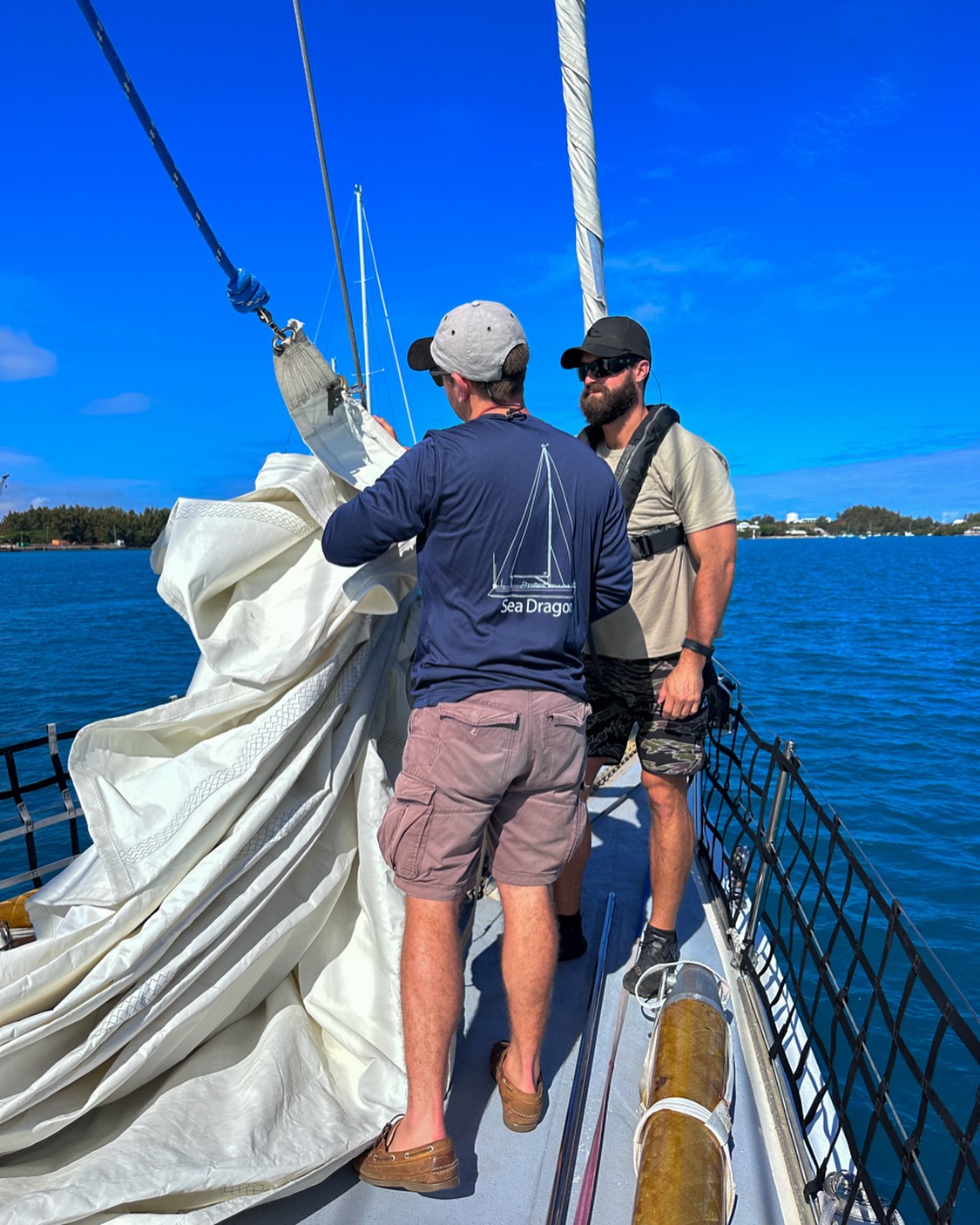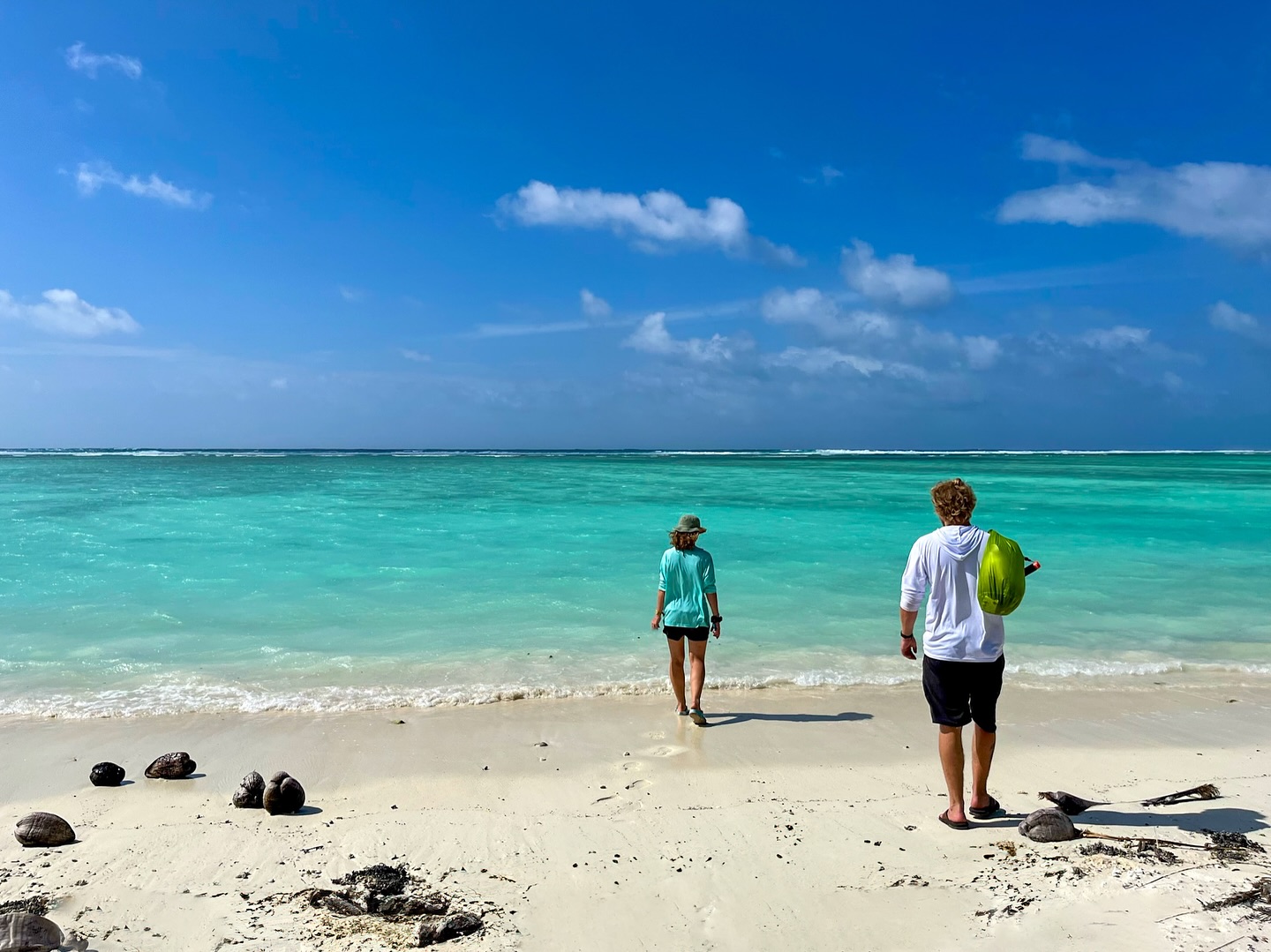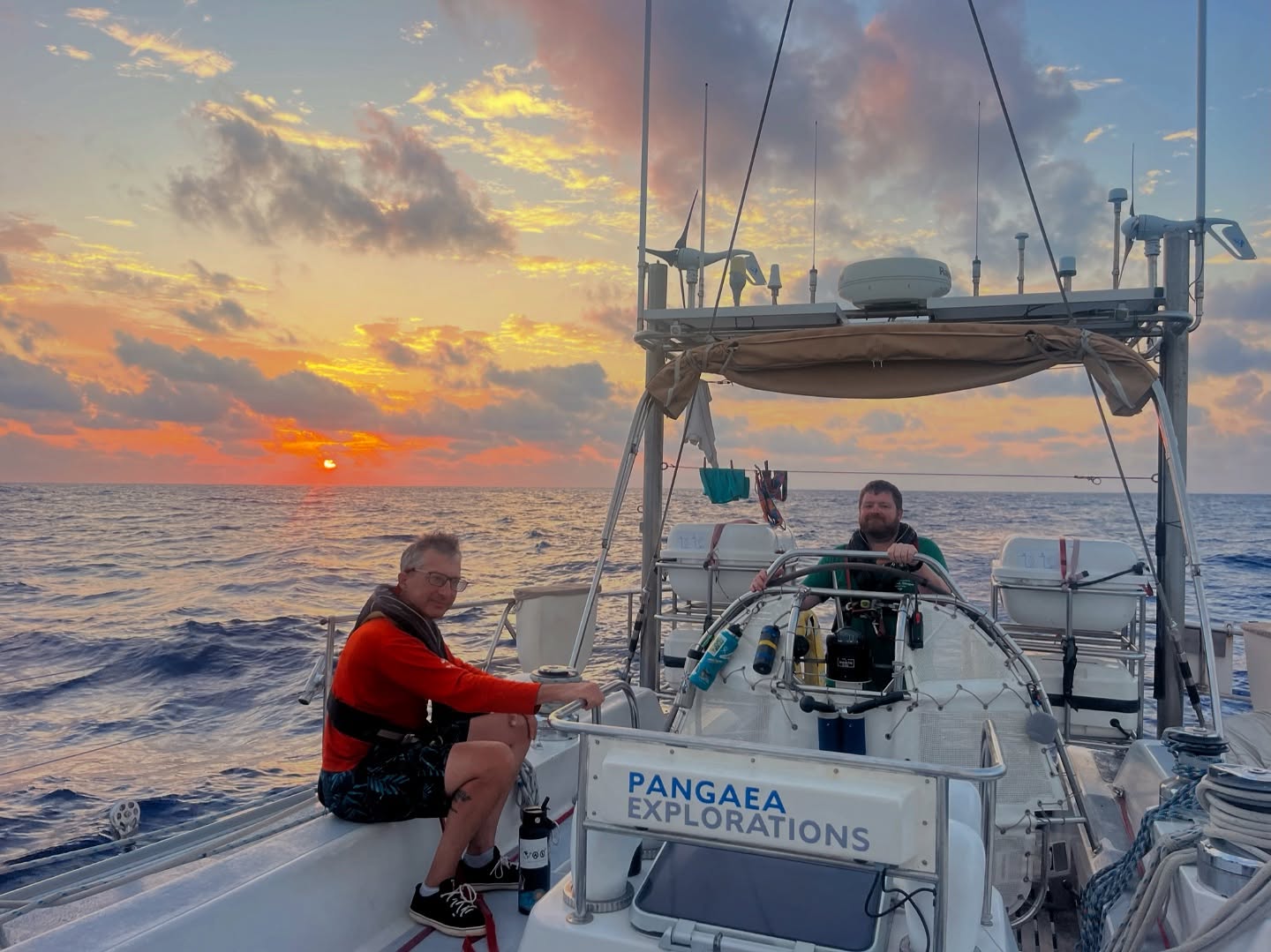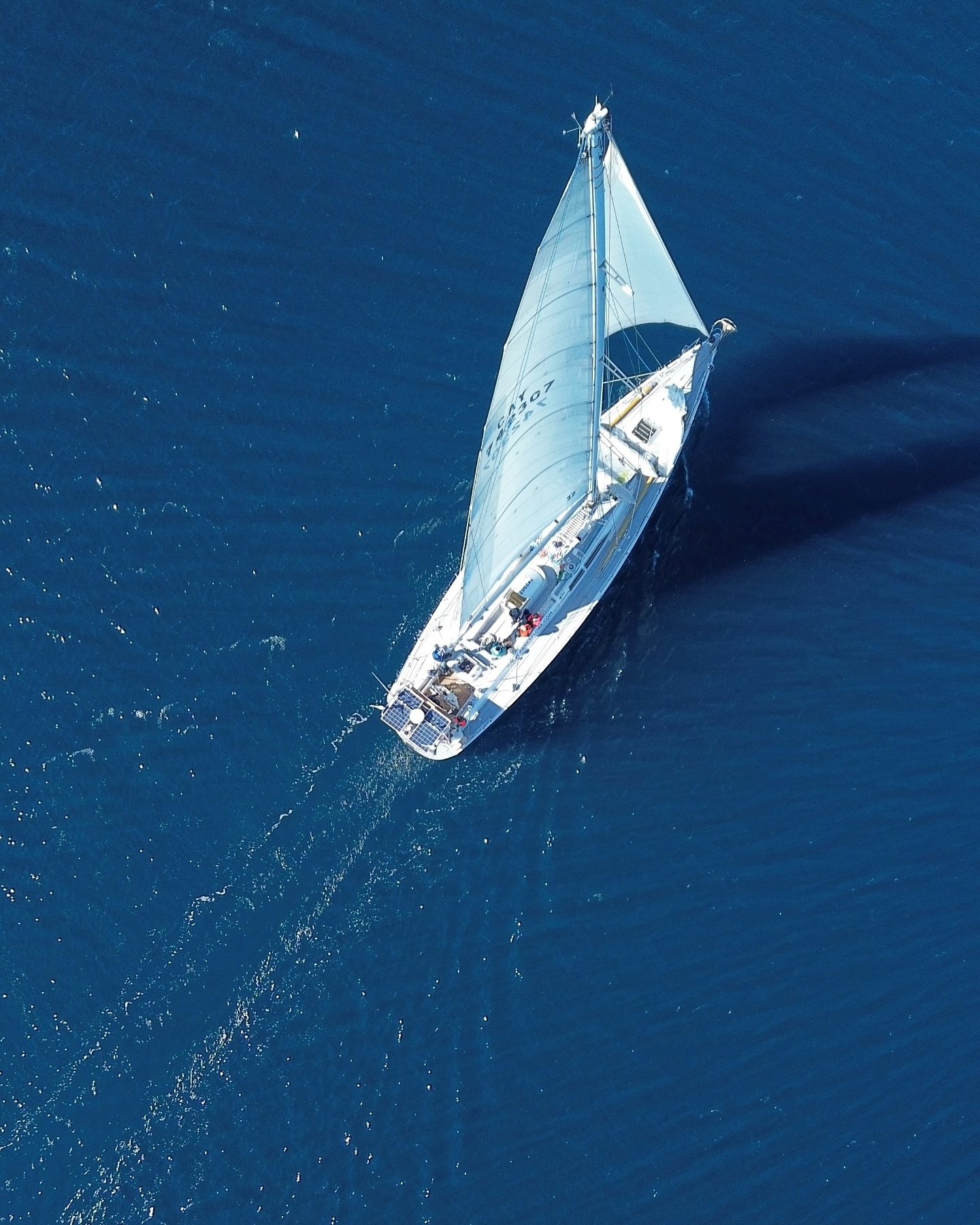Heading out of the Seamount banks, with the shallow reef dives behind us, we now take on last shot at deep water. On our course track, WSW there is an interesting extension of the Jaseur Bank. Much smaller and more compact, this mountain rises from 4000m to a marked depth of 51m (how accurate is that?). To the West edge there is a channel several miles across of 1500m deep passage to the main Jaseur Bank. We decide to use the last of our Helium and Oxygen to do one last deep dive.
It seems there are two very good reasons for this. The first official reason is that these deep areas are interesting. They site on steep slopes heading out to clear blue water, and would be affected by any upwelling nutrients. They should have concentrations of real open ocean fish species – big tuna, mahi–mahi, marlin, oceanic sharks. In addition, lacking the full sun of the shallow banks, they might hold totally different bottom communities. For example, in Hawaii such deep areas can be covered in black corals and deep sponges.
The second reason, evident for several days is well…Bird just seems to really, really want to go deep. For a guy with nothing to prove in diving, this can only be passion for exploring and seeing the deep. For several days he has been asking “so, do you think we can get a deep dive in…???”
Bill, Chip and Jonathan set up wtih the right gas mix and dive plan for a 300′ drop. Our strategy is to find the edge and position for a drop on 250′. Finding the right profile takes about an hour- back and forth searching with the sonars. The wind is picking up to 20kts but the seas are staying low for now. We get the right place.
To make this work, all three divers need to be ready to – together. They will splash about 300′ upwind from the target, and dive straight down on a long reel line, attached to a large white float ball. This is their only surface mark. They are ready.
Lots of last minute radio chatter and we are “go” All drop- I am watching Jonathan on my side. He goes straight down and they all disapear. For 40 minutes we see nothing but the faintest trace of surface bubbles. At 50 minutes we believe they are on a final deco stop- breathing pure O2.
Dive on the surface and dale is out in the Avon, through now 6-10′ seas wtih whitecaps to make the pickup. The divers remove their massive backpack tanks to be hauled up in the inflatable. There is something serene about three technical divers swiming in the open sea, being picked up by a small rubber boat. It’s a bit like the Apollo astronauts waiting for pickup after leaving the earth. Just bobbing in swells that dwarf them and their oversize float ball. Like space explorers, the 3-4 hours of work that the entire team and two boats put into this dive, yields a precious 10 minutes at depth exploring the land surface below.
What they see is a hummocky rock plain sloping off to deeper water. Small sponges, algae and other bottom life give it color but no relief. Odd white wrasse fish are living in holes surrounded by piles of loose rock- presumably from their excavation. This is pretty much it. Unlike lunar explorers, we cannot use a visual search in advance to pick our most interesting landing spots. Only vague multi-color sonar traces give us any clue for bottom topography.
This tells us quite a bit. First, we see no strong evidence yet of any deep cliffs (walls) or pinnacles. The simple, low profile bottom life may be he natural, but we are suspicious. Why no large barrel sponges, soft corals or larger fish? One can only guess that this area may have been bottom trawled before. These powerful nets often carry a leading edge of heavy chain, and have large planes (doors) that keep the net down and out. They run across any bottom like a Iowa tractor, leveling the terrain and homogenizing the life down to the lowest forms- sponges on gravel. Perhaps not, but this seems possible.
We also know that Bill really likes going down there. Despite tearing off his dive light head on the boat exit, he is all smiles on the surface.
We run WSW toward Rio, packing, cleaning, drying and resting for the 600 mile trip to port. Next stop is a wonderfully sheltered anchorage on the back side of a mountain national park island covered in rainforest. Sea Dragon and her crew are going from the high seas to the jungle.































